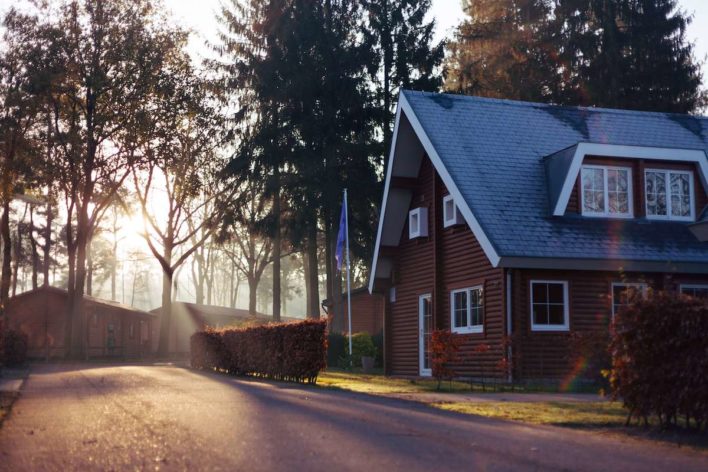VA Loan Requirements: What You Need to Know

Requirements for VA Loan Borrowers
When it comes to buying a home, many military families use a VA loan, which is one of the benefits of serving in the US Armed Forces . This type of loan can save a lot of money and can allow families to buy their own home before they would otherwise be able to do so.
VA Loan Uses
You can use the VA loan to:
- Buy a home
- Buy a condo unit in a VA approved project
- Build a home
- Simultaneously purchase and improve your home
- Improve your home by installing energy related features or make energy efficient improvements
- Buy a manufactured home and or lot
- Refinance an existing VA guaranteed or direct loan for the purpose of a lower interest-rate
- Refinance an existing mortgage loan or indebtedness secured by a lien of record on a residence owned and occupied by the veteran
VA Loan Requirements
With the VA loan you will need to have a an independent VA appraiser come and look at the residence. The VA will need to approve your house before the loan can go through. Safety, sanitation, and structural integrity is important and there are minimum property requirements that need to be abided by in order for your loan to be approved. The MPR’s help and insure that the property is constructed according to building codes and federal regulations as well as HUD requirements.
Well this might seem like an extra step in the process or a frustration but it is in the best interest of those buying the residence with their VA loan so that they do not end up in a home that has too many issues or that is unsafe for them to live in.
So what does a home need in order to be approved by the VA? Here are some MPRs VA appraisers look for:
VA Loan Minimum Property Requirements
- Properties must be single, readily marketable real estate. If there is non-residential use of the property it must be subordinate to it’s residential use and character. The non-residential use can not impair the residential character of the property, and cannot exceed 25% of the total floor area. In making this calculation, the total non-residential area must include storage areas or similar spaces that are integral parts of the non-residential portion.
- Space requirements-There must be enough space for suitable living, sleeping, cooking and dining accommodations, and sanitary facilities.
Mechanical Systems
Mechanical systems must be safe to operate, be protected from destructive elements, have a reasonable future utility, durability and economy and, have adequate capacity and quality.
Heating
- The home must be able to stay warm so that you can live comfortably. You may have a wood-burning stove as your primary heating source but you also need to have a conventional heating system installed that can maintain a temperature of at least 50°F.
- If the home has a solar system for domestic water heating and or space heating it must meet certain standards and be backed up 100% with a conventional thermal energy sub system or another backup system which will provide the same degree of readability and performance as a conventional system.
- If you do live in a climate that does not get very cold, the VA can determine that you don’t have to abide by these exact conditions.
Water Supply and Sanitary Facilities
Each unit must have domestic hot water, a continuing supply of safe and potable water for drinking and other household uses, and sanitary facilities and a safe method of sewage disposal. There are extra requirements regarding individual water supplies and individual sewage disposal systems.
The Roof
The roof must not leak and provide reasonable future utility, durability, and economy of maintenance. If a defective roof with three or more shingles must be replaced, all old shingles must first be removed.
The Crawl Space
The crawlspace must have adequate access, be clear of all debris, and be properly vented. The floor joints must be sufficiently above the highest level of the ground to provide access for maintenance and repair of ductwork and plumbing. If there is any excessive dampness or ponding of water in the crawlspace it must be corrected.
Ventilation
Attics and crawl spaces must be adequately ventilated to reduce the effects of excess heat and moisture.
Electricity
There must be electricity for lighting and necessary equipment.
Shared Facilities and Utilities
- If you have laundry and storage space or heating areas in two-to-four living unit buildings, they can be shared under a single mortgage. Utility services must be independent for each living unit. However, there are exceptions to this such as living units under a single mortgage or ownership may share water, sewer, gas, or electricity as long as there are separate service shut offs for each unit. Living units under separate ownership may share connections from the main to the building line when those connections are protected by easement or covenant, and have a maintenance agreement acceptable to the VA.
- Individual utilities serving one living unit shall not pass over, under, or through another living space unless there’s a legal provision to do so.
Access to Property, Living Unit, Rear Yard, and Exterior Wall Maintenance
- There must be a safe and adequate pedestrian or vehicular access from a public or private street. The private street must be protected by a permanent easement, and maintained by the homeowners association or joint maintenance agreement. All streets must have an all weather service.
- There must be access to the living unit without having to pass through any other living unit. Each living unit must be able to be used and maintained individually without trespassing through joining properties.
- There must be access to the rear yard without passing through any other living unit. If there is a situation of a row type dwelling then access must be made by means of an alley, easement, passage through the subjects dwelling, or other acceptable means.
- There must be adequate space between buildings to permit maintenance of the exterior walls.
Hazards and Defective Conditions
- The property must be free of hazards which may adversely affect the health and safety of the occupants, adversely affect the structural soundness of the dwelling and other improvements to the property, or impair the customary use and enjoyment of the property by the occupants.
- There are conditions which impair safety, sanitation, or structural soundness of the dwelling unit. These conditions will cause the property to be unacceptable until they are fixed. They are but not limited to, defective construction, poor workmanship, evidence of continuing settlement, excessive dampness, leakage, decay, and termites.
- There must be proper drainage away from the perimeter walls of the dwelling and drainage that prevents ponding of water on the sight. Appraisers will also look for and report any evidence of wood destroying insects, fungus growth, and dry rot in addition to any VA requirements for an inspection of the property by a wood destroying insect inspector.
Lead Based Paint
There cannot be any lead based paint on any interior or exterior walls at the property, and if there is it will need to be corrected. Appraisers will assume that any defective paint condition on a property that was built before 1978 will involve lead based paint.
Party Walls
A building that is constructed to the property line must be separated from the adjoining building by a wall extending the full height of the building from the foundation to the roof. The wall may separate row type townhouses or semi detached units.
Gas and Petroleum Pipelines
The residential structure cannot be located within a high-pressure gas or liquid petroleum pipeline easement. This includes being partially in the easement as well. There are special conditions for property close to the easement.
High-Voltage Electric Transmission Lines
No part of the residential structure may be located within a high-voltage electric transmission line easement to include partially being in the line easement.
Water and Sewage
- There must be a connection to a public or community water/sewage disposal system when feasible and the water quality must meet the requirements of the health authority that has jurisdiction or the maximum levels that are established by the EPA if there is not.
- Water treatment systems are not acceptable for wells which do not meet the VA quality standards do to insignificant depth or a contamination source near the supply. There are certain circumstances where the property can be eligible for a VA loan if the lender provide certain documents.
- Shared wells can be allowed under certain requirements.
- Springs or cisterns are permitted where such facilities are customary and the only visible means of water supply as long as they are installed in accordance with the recommendations of the local health authority and the veteran puts in writing his or her awareness of the situation. If the local health authority has no requirements then US public health service requirements apply.
- Sewage Disposal system-All domestic waste must be disposed of in a manner which will not create a nuisance or in anyway in danger the public health. Individual pit privies are permitted where such facilities are customary and the only visible waste disposal option provided they are installed in accordance with the recommendations of the local health authority or the US public health service requirements if there is no local health authority.
Manufactured Homes
If a manufactured home has a fully completed foundation and the manufactured home unit has been installed, the home would be considered existing construction. The site, the manufactured home unit, and other on-site improvements must meet the VA MPR’s requirements for existing structures. The manufactured home unit must be properly attached to a permanent foundation system which is constructed to withstand both supporting loads and wide overturning loads and be acceptable to the building authority that has jurisdiction.
If the foundation for the manufactured home has not been fully completed and the unit has not been installed, the home is considered to be proposed or under construction. The site and on-site improvements but not the unit must meet requirements. The manufactured home unit must be properly attached to a permanent foundation system which is constructed to withstand both supporting loads and wide overturning loads and be acceptable to the building authority that has jurisdiction.
If you would like to start the process of looking for a home with your VA loan one of the best things you can do is find a realtor that has plenty of experience with VA loans. That way, when you were out looking at homes, they will be able to tell you what may pass and what might not pass when it comes to VA approval. Having someone that knows ahead of time what to look for will save you a lot of trouble as you start your home search.
Keep in mind that having a VA appraiser is different then a home inspection and that you should also pay for your own home inspection. That way, you know exactly what is going on with the home and repairs can be done before you move in.
RELATED:
- Ways to Save Money on Housing
- Best Practices for the VA Loan Process
- The VA Loan Certificate of Eligibility
- VA Adapted Housing Grants: An Overview


